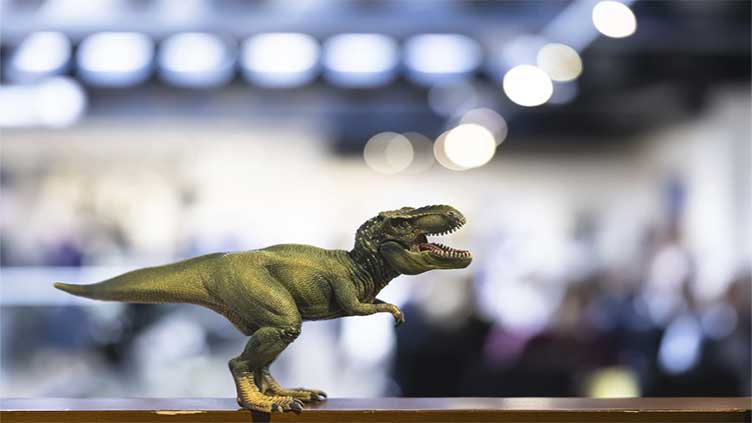Meme falsely claims dinosaurs were only invented to prove evolution is real. There is no 'dinohoax'

World
Meme falsely claims dinosaurs were only invented to prove evolution is real. There is no ‘dinohoax’
NEW YORK (AP) The word “dinosaur” was coined before the first dinosaur fossils were discovered, which proves that the prehistoric reptiles never existed.
AP’S ASSESSMENT: False. Humans have been finding dinosaur fossils for thousands of years, although experts widely credit an English surgeon and his wife for recognizing their significance after the couple’s 1822 discovery of dinosaur teeth in a forest south of London. An English anatomist and paleontologist coined the word “dinosauria,” the scientific name for dinosaurs meaning “terrible lizard,” in 1842.
THE FACTS: Millions of years after the dinosaurs’ extinction, social media users have dug up an old meme to deny the ancient beasts ever actually roamed the Earth.
“Sir Richard Owen, who created the term dinosaur, wanted to prove evolution to be true,” reads an image shared on Instagram. “He knew that many in the scientific community embraced the same goal. He was broke, and desperate to succeed. After his invention of the ‘dinosaur’ in 1842, amazingly, the first dinosaur discovery happened in 1858.”
In the top-left corner of the image, the word “dinohoax” appears below a picture of a Tyrannosaurus rex.
It’s unclear where the meme originated, but a Google search for “dinohoax” shows it has been circulating online since at least 2019.
Owen, an English anatomist and paleontologist, introduced the term dinosauria in 1842 to describe three types of extinct reptiles that had been formally named in the first decades of the 1800s.
But experts say fossilized dinosaur remains have been uncovered throughout human history, even though they weren’t broadly recognized for what they are until the 19th century.
“People have been interested in not just fossils, but dinosaur fossils, certainly for thousands of years,” Bruce Lieberman, director of the University of Kansas’ Paleontological Institute, told The Associated Press.
He explained that there is archaeological and other types of evidence pointing to an awareness among early civilizations of the creatures that would come to be known as dinosaurs. For example, a Native American pictogram of a giant bird dated to about 500 A.D. was found next to a site where dinosaur footprints were also discovered.
Gideon Mantell, an English surgeon, and his wife Mary Ann Mantell are widely regarded by experts as the first to view dinosaur fossils through a modern scientific lens. The couple, both amateur paleontologists, noted the significance of fossils as belonging to a different type of reptile following their discovery of dinosaur teeth in Tilgate Forest, approximately 27 miles (44 kilometers) south of London, in 1822.
After noticing similarities between the fossilized teeth and those of living iguanas, Gideon Mantell published a paper with his findings in 1825, naming the creature to whom the latter belonged iguanadon. Years later, Owen would use the word dinosauria to describe the iguanadon and two other creatures named around the same time — the megalosaurus and the hylaeosaurus.
“These three examples represent the first to be formally identified, described, and named scientifically as extinct animals,” Matt Friedman, director and associate curator at the University of Michigan’s Museum of Paleontology, told the AP in an email. “Owen was suitably impressed by the differences between these three ancient creatures and ‘ordinary’ reptiles that he decided they merited their own group, the dinosauria.”
Friedman added that “although a variety of evolutionary ideas were in circulation at the time,” Owen came up with the word dinosauria nearly 30 years prior to the publication of Charles Darwin’s “On the Origin of Species,” regarded as the cornerstone of evolutionary biology.
Additionally, Owen was not “desperate to succeed,” contrary to the claim spreading online.
“Owen was one of the most prominent British biologists of the mid-1800s, not some unknown scientist laboring in obscurity and looking for a big break,” Friedman wrote



